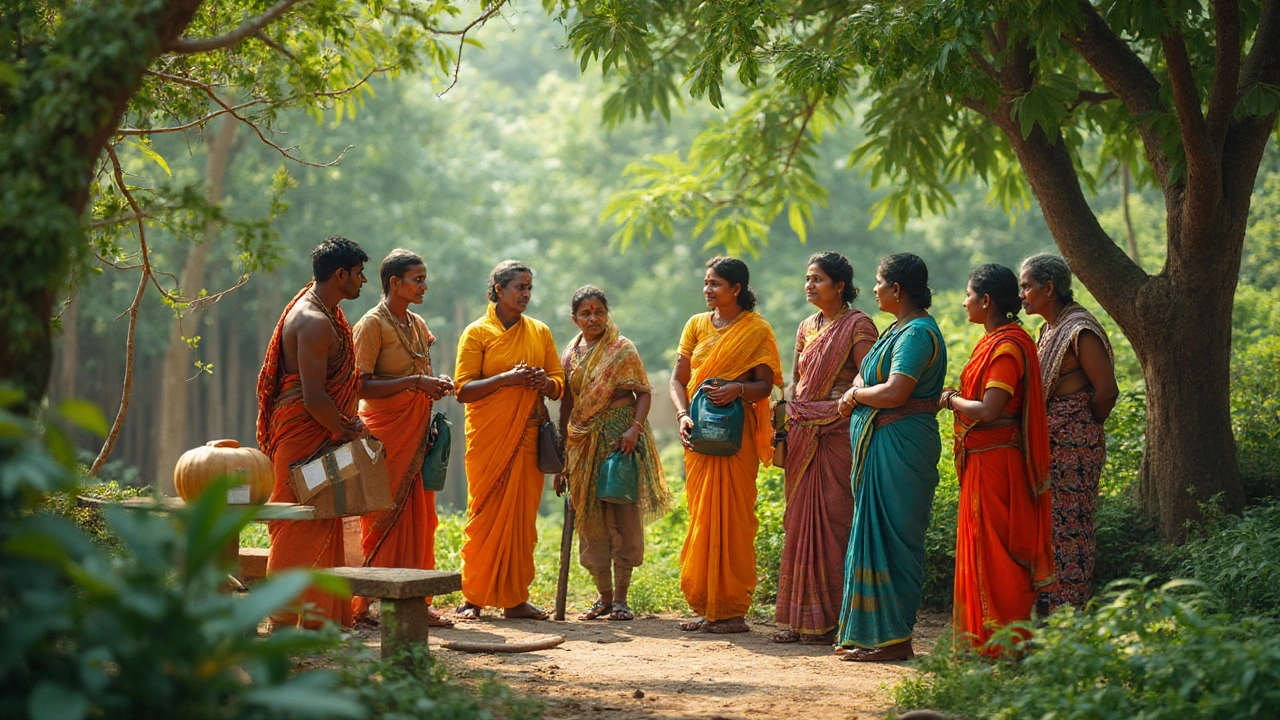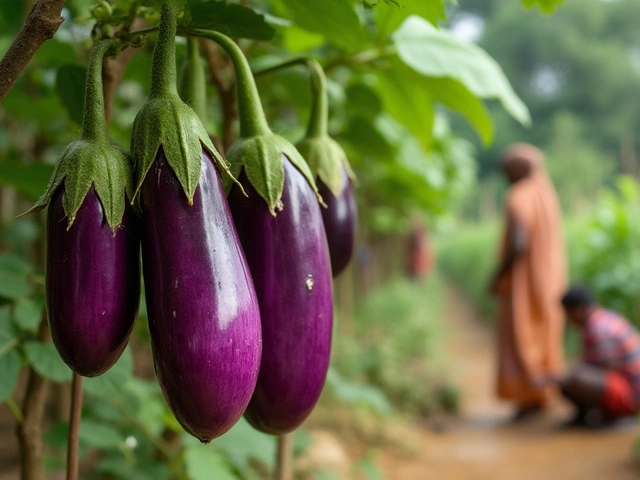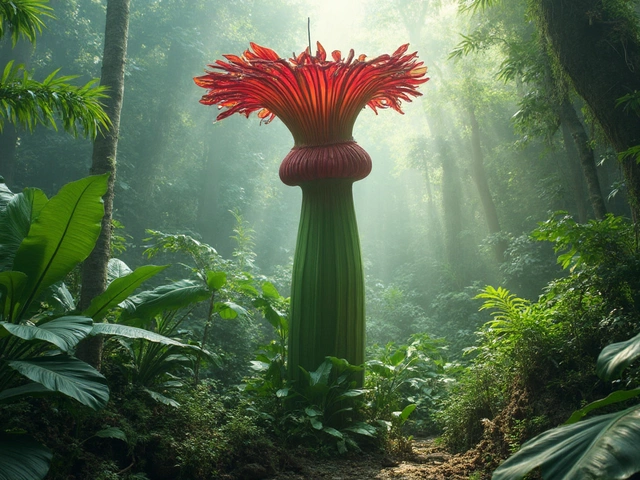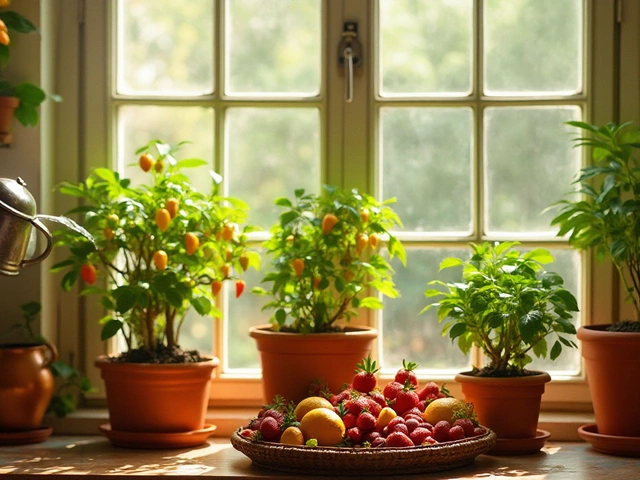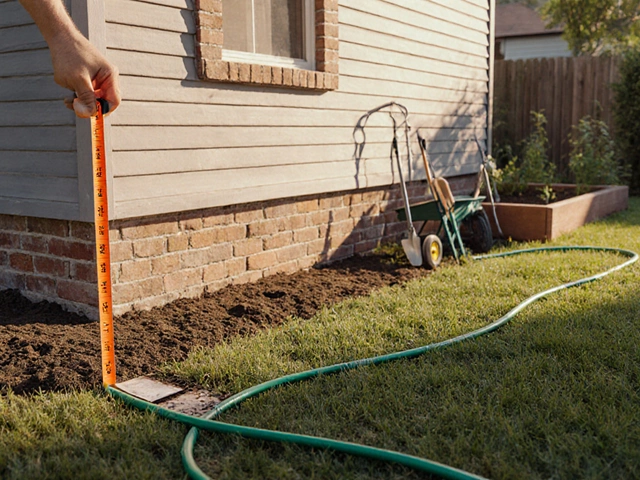Imagine you’re staring at a dusty garden bed. The hose in your hand is soaking your sneakers, and the plants seem only halfway satisfied. It’s strange, right? Here we are in 2025, with wild summers, rising water bills, and a planet thirsty for smart solutions, yet drip irrigation—arguably the most efficient watering system ever devised—remains a rare choice in backyard gardens and commercial farms alike. If it’s so good, why aren’t we all using it? Turns out, the reasons are tangled in surprising ways. Let’s pull them apart and see what’s really holding drip irrigation back from its moment in the sun.
What Makes Drip Irrigation Such a Big Deal?
Drip irrigation isn’t new. It’s got roots going back to ancient times, but things really picked up in the 1960s, when Israeli engineers started driplining crops in the Negev Desert and watched stubborn sand bloom into green. The idea couldn’t be simpler: deliver water straight to a plant’s roots, using skinny tubing and emitters. The magic in this method is in its efficiency—while old-fashioned sprinklers or open flooding might waste 40% of their water (thanks to runoff and evaporation), drip systems can reach up to 95% efficiency. That has caught the eye of farmers looking to stretch every drop, especially in parched places like California or Australia.
With those numbers you’d think every plot, patch, or paddock would be riddled with tubing by now. But according to a report from the International Water Management Institute, as of 2024, drip irrigation covers less than 10% of the world’s irrigated farmland. Even in the U.S., the world’s number one user of irrigation, less than 20% of farmland is hooked up for drip, and that’s mostly for high-value crops like strawberries or grapes.
Beyond water savings, drip cuts down on weeds (since you’re not wetting the spaces between your plants), reduces disease by avoiding soggy leaves, and lets you toss fertilizer right into the lines. On paper, it’s a win-win-win. So, what’s blocking the flow?
It’s All About Upfront Costs and Know-How
The sticker shock is real. A basic DIY drip kit for a small garden patch might run you $50–$100 in a hardware store, but the price quickly jumps with size. For a commercial farm, installing a high-tech drip system can cost anywhere from $1,000 to $3,000 per acre, depending on crop type, land shape, and whether there’s filtration, fertigation (that’s mixing fertilizer in), or automated controls.
Lots of gardeners hesitate when they hear about trenching, pressure regulators, backflow preventers, and the need to design a layout. Even my neighbor, who loves gadgets, grimaced at the tangle of tubing and connectors in the kit he bought last spring—he gave up and went back to dragging his old hose after a week of fiddling.
Commercial farmers face even bigger hurdles. Take rice cultivation: growing rice usually means flooded fields, not neat rows of drip. The switch costs money, time, and a leap of faith that a system built for tomatoes will work for grains. Then there’s maintenance—emitters clog with hard water, algae, or tiny bits of dirt. Cleaning out lines, fixing leaks, and hunting down pressure drops eats time and patience that folks may not have. With labor more expensive every year, that’s a big ask. And if you’ve ever seen your dog Max run wild in the garden, you know how vulnerable those tubes are to curious paws and playful digging.
Here's a quick look at the rough costs by irrigation system:
| Irrigation Method | Installation Cost per Acre (USD) | Water Use Efficiency (%) |
|---|---|---|
| Drip | $1,000 - $3,000 | 90–95 |
| Sprinkler | $600 - $1,200 | 60–75 |
| Flood/Furrow | $300 - $700 | 50–60 |
Even though the long-term savings on water and fertilizer will probably pay back the investment, many folks just don’t have the cash up front or the technical confidence to install it right.
Water Quality and Clogging—A Silent Killer
If you ask anyone who’s tried drip, there’s a four-letter word they’ll groan about: clog. Here’s the thing—drip lines have tiny openings. That’s the whole point: slow, steady drips right at the roots. But those little holes don’t play well with water that isn’t crystal clear. Well water, pond water, or municipal supplies loaded with minerals (hello, California “hard water”) bring sand, silt, algae, rust flakes, or lime gunk. This stuff gets stuck in filters, gums up emitters, and wrecks even expensive gear.
The solution is proper filtration, but basic filters aren’t always enough. Filters need attention too, or they fail. The National Agricultural Statistics Service found that on vegetable farms in Florida, 30% of drip failures went back to poor maintenance or overlooked filters. Add in fertilizer clogging and critters (insects, roots, even curious mice looking for a drink), and some gardeners throw in the towel.
Here are a few insider tips to avoid the worst of these problems:
- Always use a filter rated for your water source, and clean it every two weeks during the growing season.
- Flush lines at the start and end of the season, and after any fertilizer applications.
- Install pressure regulators if you’re using city water to prevent blowing out emitters. Drips like gentle, steady pressure—think 10–30 psi.
- If you notice patchy growth, do a walk-through: are emitters dripping? Or are some bone dry?
- Keep backup connectors and spare tubing around; repairs are quick if you’re prepared.
Most people give up because something went wrong, not because they didn’t believe in the system. You can set yourself up for fewer headaches if you start with the right gear and keep it simple at the beginning.
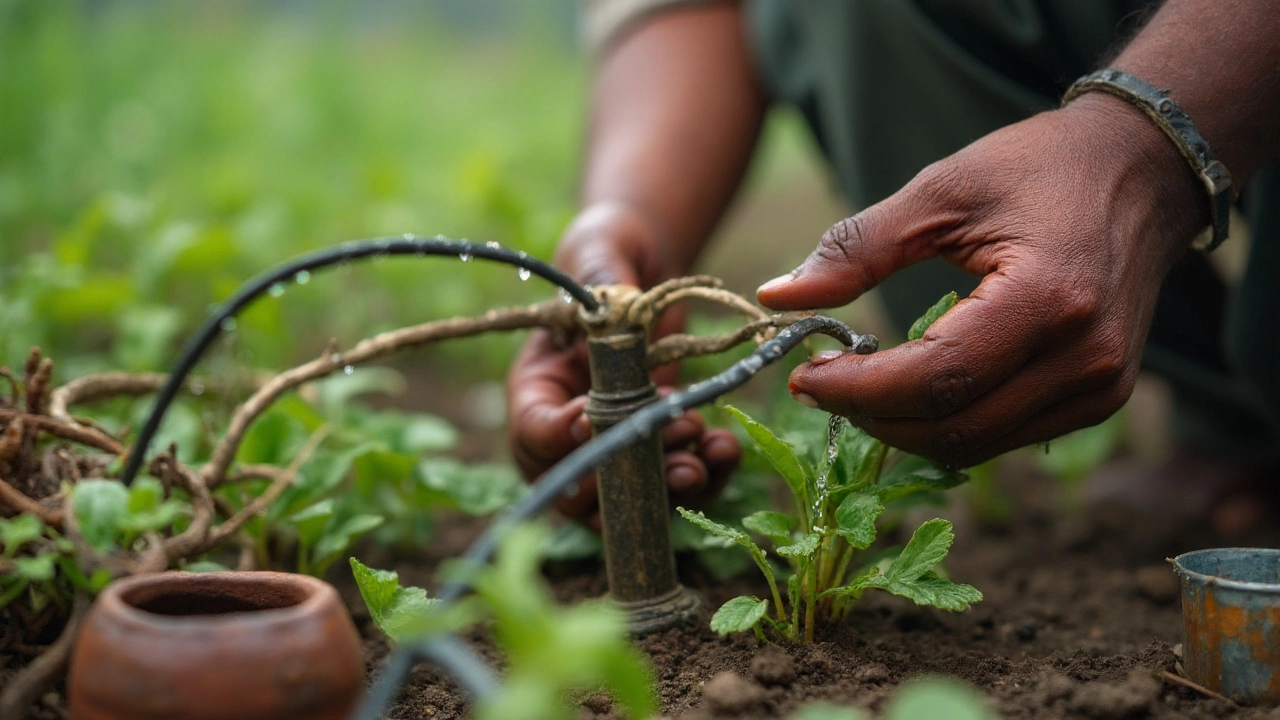
Myths, Mistakes, and Reluctance to Change
Honestly, half the battle with drip irrigation is in people’s heads. There are myths galore: ‘Drip is only for big farms,’ or, ‘It’s too complicated for backyard gardeners.’ I’ve heard these at every garden club meeting. Others fret that drip won’t deliver enough water for thirsty crops or big trees, not realizing you can scale the tubing and emitter flow rates.
Another common trap is buying the cheapest kit online, skipping good instructions, and putting tubing right on the ground. It gets sun-baked, stepped on, or tripped over—then people swear it ‘never worked right’. Burying drip lines under mulch helps, but most folks don’t hear that tip until it’s too late. Little mistakes add up and create the next skeptic.
People also love tradition. Watering by hand is calming, almost meditative, and it gives you an excuse to check on the plants (and the weeds, and whether squirrels have been up to mischief). Commercial growers may not want to lay out cash for something that isn’t a sure thing, especially if they’re already making do. And when something goes slightly wrong—plants wilt, yields dip—they’ll blame the new system and pull it out fast.
Let’s talk about weather and gardening cycles. In climates with lots of rainfall, folks may not bother with any automatic watering. They just let nature do its thing. On the flip side, in perennially dry zones, the cost and trouble feel worth it, but in temperate zones, the story is less certain. This swings back to why drip is popular in Israel or California, but less so in England or Canada.
Where Drip Works—and Where It Doesn’t
If you’re growing peppers, strawberries, tomatoes, or orchard crops like apples and olives, drip is a godsend. That’s why you’ll find it running under rows in California’s Central Valley, around almond orchards in Spain, and across vineyards from Oregon to Chile. Even greenhouse operations love it, since it keeps foliage dry and roots happy.
But it’s far from universal. Huge crops like rice or wheat—think millions of acres—just don’t work with drip yet. The infrastructure needed to snake lines over vast, flat fields, lift rows up for the tubing, switch from traditional seeding, and manage all the repairs? It’s a logistical headache that even NASA wouldn’t envy.
For ornamental lawns or turf, spray or rotor systems are cheaper and easier to install (and who minds a few wet blades?). Flood irrigation isn’t going away in developing countries, either, because it’s cheap, resilient to breakage, and doesn’t require buying manufactured parts or learning new tricks.
Then there are the gardens like my own, where Max loves to sneak in a little digging. Surface driplines are no match for a determined dog, nor for moles, raccoons, or the occasional careless foot.
If you’re curious where the adoption stands, here’s some real-world data:
| Country | Drip Irrigation Acreage (%) |
|---|---|
| Israel | 80 |
| U.S.A. | 18 |
| India | 7 |
| Spain | 32 |
| China | 5 |
The tech is spreading, but it’s slow going. Each region faces its own set of obstacles—cost, water quality, traditions, crop types, and, frankly, the will to change.
What Would Make Drip Irrigation More Popular?
So, if drip irrigation really is that great, what would it take to tip the scales? Subsidies help—a lot. In some states in India, government cost-sharing programs have boosted drip adoption for vegetables and fruit. Education is key, too: local nurseries running hands-on workshops, YouTube personalities breaking down the setup in ten minutes, or user-friendly kits with foolproof instructions.
Improvements in materials are just starting to help. Biodegradable tubing, better filters, and smart valves that regulate flow by themselves are on the market, but most are still too pricey for backyard use. Some startup companies in Europe are working on sensor-packed kits that monitor flows, identify clogs, and alert you when it’s time for a flush—just like your car telling you to change the oil. If those drop in price, watch for a big shift in gardens everywhere.
Right now, drip is best for folks who are committed to learning, willing to tinker a little, and have the time and cash to set it up well. If you’re a tinkerer, you’ll love experimenting with layouts and adjusting flow rates. If you love peace and quiet, nothing beats the silent, steady drip—no loud sprinklers to wake the neighbors or startle your pets.
For everyone else wondering if they should give drip a shot: maybe start small. Install a line for your tomatoes, or try it on your hanging baskets or raised beds where the reward is clear. If it fits your life (and your garden helper doesn’t chew up the hoses), you might wonder why you ever watered any other way.
